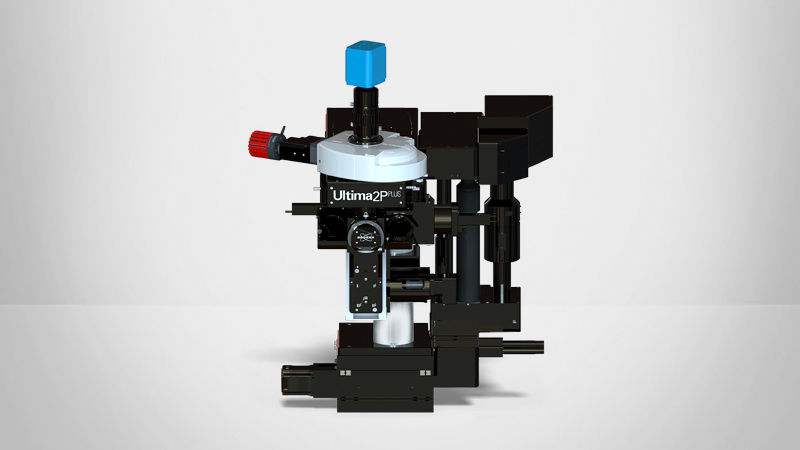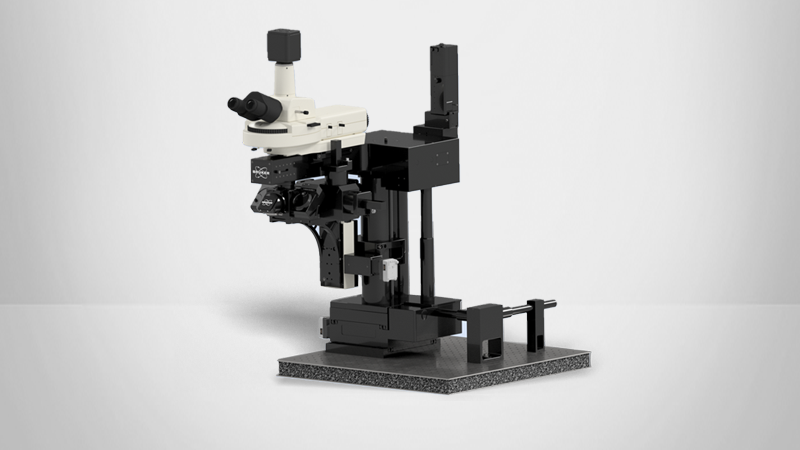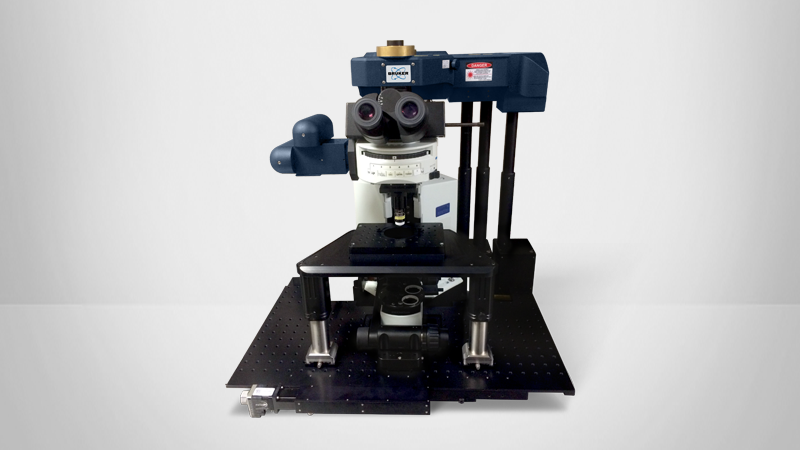Objective Z-Piezo Stage
Imaging speed is particularly important for understanding neural computation. Both individual neurons and circuitries extend over hundreds of microns in each dimension.
A straightforward approach to imaging the entire volume—at a rate that is sufficient to capture all the calcium transients—is to rapidly adjust the 3D position of the focal point of the laser inside the sample. Although calcium indicators that are currently used as indicators of neuronal activity function as low-pass filters of these electrical signals, sub-second time resolution is still needed.
Bruker supports this application with the objective Z-piezo stage, a fast piezoelectric objective positioner. Synchronizing resonant galvo imaging to Z-piezo steps in Bruker’s Prairie View acquisition software supports sufficient speeds for volume scanning.
In the exemplary volume scanning data featured here, four 441 × 512-pixel imaging planes were separated by 20 μm and imaged sequentially at a stack rate of 5 Hz in an imaging session. Even faster rates can be achieved with other settings.
To take advantage of multiphoton technology, which allows imaging down to 1mm within a sample, Bruker offers 0.25 mm, 0.4 mm, and 1 mm with 0.05 μm step size working distance Z-piezo stages. The piezo can be used with variety of objectives offered commercially.
The operation of the piezo is controlled in Bruker’s proprietary software, Prairie View. With this system, acquisition that is calibrated, fast, and bidirectional is supported. Additional time between frames can be set to give the Z-piezo stage time to settle before the acquisition of the subsequent frame. To improve positioning accuracy during data acquisition, a calibration procedure can be performed at a single click. The objective Z-piezo stage is an add-on module that consists of a piezo stage, a set of objective adapters, and an electronics control box. The module can be installed easily by the user. Additionally, remote support or an onsite visit is provided.


